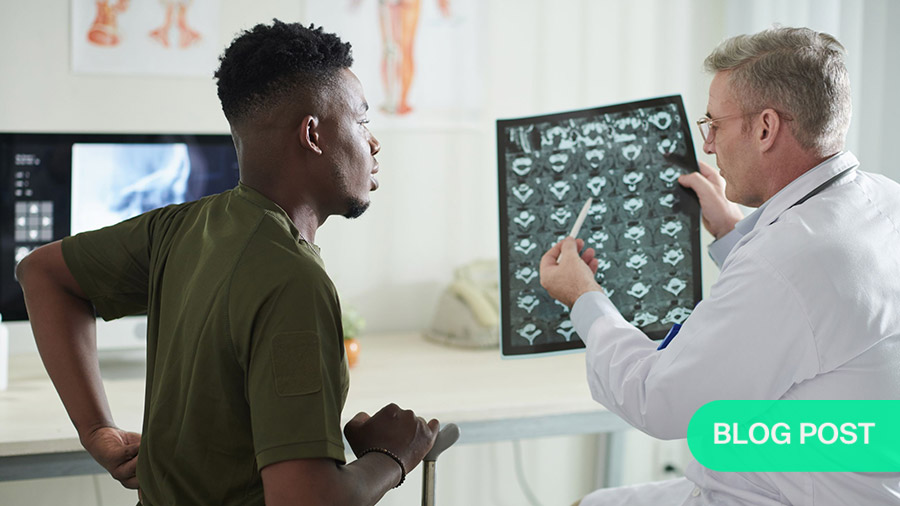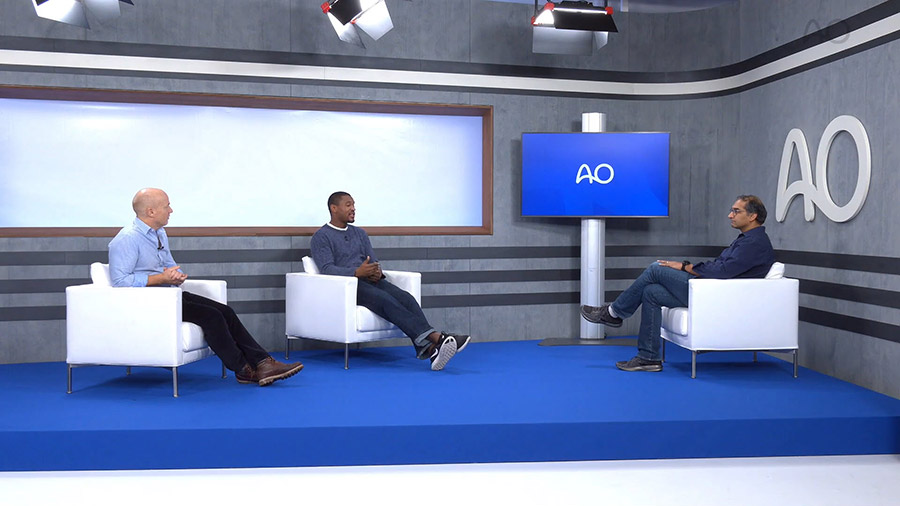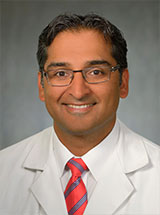Re-thinking pain management—why orthopedic surgeons have a role to play in battling the opioid crisis
BY IAIN MCFADYEN, MILTON LITTLE AND SAMIR MEHTA

Medical opioids are one method of treating acute pain after surgical procedures. However, it has become increasingly clear in recent years that prescription opioid consumption has significantly contributed to the public health crisis of opioid abuse in the United States and elsewhere. As orthopedists, we are among the most prolific prescribers of pain medication. We believe that we should re-evaluate how and why we prescribe opioids.
There is a crisis regarding pain management, specifically in the United States, where, according to the statistics, approximately 90 percent of the global pharmacologic opioid supply is prescribed. And, there clearly is a problem with that fact.
For one, there is what we call diversion: some of the medications given out to patients for legitimate reasons end up on the streets, where they drive addiction and abuse. But we have also seen countless patients who themselves get drawn into cycles of substance addiction or misuse after being prescribed these powerful painkillers.
Take the following example of a 16-year-old student who had an accident while driving his car around a decade ago and who fractured both his talus and his pelvic ring. He had also had some previous mental health issues, including attention deficit disorder (ADHD). The patient was prescribed between 60 and 90 pills of oxycodone on discharge from the hospital, which was regarded at the time as a normal dose. Tragically, this young man subsequently developed an opioid addiction. He went to college at 19, and there, he died of an overdose. Examples such as these—of which we now have numerous across the entire country—should serve as eye-openers for members of our profession, and especially so since the American opioid crisis has become a part of our everyday lives.
Orthopedic surgeons must realize that they carry a great responsibility in terms of preventing stories like this one – the medication we give our patients as part of what we believe will be their recovery can be responsible for their morbidity and/or mortality.
Re-defining expectations
In the United States, orthopedics ranks third in the list of specialties that prescribe the highest amounts of prescription opioids. This means that, as orthopedists, we have been among the major contributors to this crisis. And, we absolutely must do a better job. The sooner we realize these truths, the better.
One aspect of this has to do with re-addressing the concept of zero pain. Many have come to regard pain almost like a vital sign that should be assessed for every single case. And somehow, the attitude has spread among patients that if the pain is any greater than zero, then we as physicians are doing a poor job. It is our job to help a patient understand that this is wrong.
Instead, we should be telling our patients that they are most likely going to have pain, and that the opioids should be utilized when the pain becomes intolerable. In many cases, post-operative pain levels are likely going to be a five or a six on a scale of one to ten. If patients expect and understand that, they can recognize that the pain medication is for the worst situations, but they can strive to discontinue the medication sooner rather than later.
The same applies when we treat outpatients, for instance for an ankle or a distal radius fracture. Here too, we must be conscientious about prescribing fewer opioids. As an alternative, we can utilize other medications to help decrease the pain burden. One option would be to combine the opioids with things such as anti-inflammatories.
We must also tell patients from the outset that as they begin to reduce their medications, the first ones to go should be the opioids, not the anti-inflammatories. Transitioning from opioids to non-narcotic pain medication is essential.
The view from Europe
While the opioid crisis has really come to the forefront of the dialogue among medical professionals in the US in recent years, the situation is slightly different on the other side of the Atlantic. Of course, there is also an opioid crisis there, but not to the same extent. Part of the reason may be that the marketing drive from the pharmaceutical industry has been slightly less intense. Another reason may be that the medical system in Europe, for example in the United Kingdom, still relies much more on the model of the family doctor, who is involved in the care after discharge from the hospital.
However, this can bring up its own distinct problems, because a disconnect can develop. For example, the orthopedic surgeon will not necessarily be the primary prescriber for a lot of patients. That role will fall to the family doctor, and in some cases, they will simply fill out repeat prescription after repeat prescription, because they did not initiate the medication, and might not have enough information to determine when to stop it.
Meanwhile, the orthopedic surgeon may long have stopped thinking about the pain medication, believing this to be under the care of the family doctor. As a result, we encounter cases where patients, whose pain should have gone away a long time ago, remain on high doses of an opioid nine or even twelve months after surgery.
Alternative pain management strategies
What the UK seems to be doing better than the US is perioperative pain management, for example through the application of peripheral nerve blocks in the early stages of an operation with the help of anesthetists. As a result, there seems to be a lower use of opioids right from the outset.
There also has been a slow change in attitudes towards the use of non-steroidal anti-inflammatory drugs (NSAIDs) in fracture therapy. In the past, there was a widespread belief that taking ibuprofen or NSAIDs would prevent the proper healing of a fracture. Those views however were what we call orthopedic folklore—they were not based on particularly great scientific insight.
Sadly, these kinds of misconception have led many orthopedic surgeons to contribute to the problems around opioids over the years, because they simply ruled out certain types of medication.
Steep learning curve
The consequence is clear: we need to become much more aggressive in terms of alternative medications and multimodal pain strategies, not just in Europe but also in the US. That means decreasing the numbers of opioids patients receive when they are being sent home, while at the same time increasing the amounts of augmenting medications. This of course involves a learning curve, and we still have a lot of knowledge-gathering ahead of us.
In this regard, we could possibly profit from technology that can be used to get a better picture of patients’ actual opioid use. In one example we’ve seen, a text messaging system allowed patients to report how many pills out of ten they took after discharge. The result was that patients, who had been prescribed ten pills after a knee arthroscopy or a surgical procedure for carpal tunnel syndrome or a distal radius fracture, regularly only used six. Interestingly, when the number of pills given out was subsequently reduced to six, they only used four.
This however did not apply to all patients: while one group of patients used significantly fewer pills than they were given, another group used them all and often even asked for more. There are indications that latter group may consist of patients who are more used to opioids because they have had them in the past.
Setting clear targets
And that presents us with a new challenge: how do we work with those patients? Is it a matter of simply placing them on the same strict regimen and telling them that these are the rules?
Part of the answer is: we must be much more diligent about setting clear expectations. This can be difficult, especially with patients who have been on medications for several months, for instance after a hip fracture. Sometimes, they will also have received antidepressants or anti-anxiety medications; in other cases, they will have previously used opioids. And those patients clearly are an at-risk population: at risk for being on these medications for much longer, at risk for addiction, at risk for an overdose.
We should always bring these issues up with them and ask them, who was prescribing their pain medications before? Was a pain management doctor involved, or anyone else who was helping?
Oftentimes, those patients will be very defensive. They get upset at the fact that we even raise the topic. But we absolutely have to have that conversation. And we also have to set clear targets: after six weeks, for instance, they are going to be off the medications, or they will be down to one pill at night. The goal must always be clearly communicated: they are going to be off the opioids at a pre-defined point in time.
About the authors:
Dr. Milton Little is a member of the Orthopaedic Trauma Service at Cedars Sinai Medical Center specializing in intra-articular fractures, orthopaedic treatment of polytrauma patients, pelvis, acetabulum, and nonunion fracture fixation. He is a member of the AO teaching faculty and the Cedars-Sinai Orthopaedic Trauma Fellowship Director.
He has published extensively in peer-reviewed journals including Journal of Orthopaedic Trauma, Journal of Bone and Joint Surgery, and the Bone & Joint Journal (formerly JBJS Br). He has published and presented on numerous topics including ankle fractures, proximal humerus fractures, tibial plateau fractures and pelvic/acetabular fractures.
Dr. Little completed his undergraduate degree at Stanford University. He graduated with honors from the University of Michigan Medical School in Ann Arbor, Michigan. After completing an orthopaedic residency at the Hospital for Special Surgery in New York City, he finalized his training with an Orthopaedic Trauma Fellowship at Harborview Medical Center/University of Washington.
Samir Mehta, MD is an Associate Professor in the Department of Orthopaedic Surgery and Chief of the Orthopaedic Trauma & Fracture Service at the Perelman School of Medicine at the University of Pennsylvania. Samir did his Orthopaedic Surgery residency at the University of Pennsylvania where he was a research fellow and was also awarded the DeForest Willard Award. Having developed an interest in Orthopaedic Traumatology, Samir furthered his education as an orthopaedic trauma fellow at Harborview Medical Center in Seattle, Washington. Upon completion of his orthopaedic trauma fellowship, Samir was awarded the AO John Border Memorial European Fellowship Award and continued his education at the University of Saarland in Homburg, Germany. Samir is also the clinical research advisor of the Biedermann Lab for Orthopaedic Research at the University of Pennsylvania and the medical director for clinical research for the Department of Orthopaedic Surgery. As a result of a busy clinical practice, he has developed a particular interest in pelvic and acetabular fractures, repair of non-unions and malunions, and reconstruction of peri-articular fractures.
Samir is also actively involved with the American Academy of Orthopaedic Surgery, the American Orthopaedic Association, the Orthopaedic Trauma Association, and he AO Foundation. He has been awarded the prestigious American Orthopaedic Association-North American Traveling Fellowship, the AO Howard Rosen Teaching Award, and also has served as an AAOS Health Policy Fellow on Capitol Hill. His research interests include non-unions, open fractures, traumatic articular cartilage injury, and fracture healing. He has participated in over one-hundred peer review publications, has multiple current funded studies, and has presented on numerous occasions nationally and internationally. He has been awarded several grants from agencies such as the DOD, PCORI, and NIH. He has been actively involved in multiple research projects examining graduate medical education and is currently was faculty member for ten years on the AAOS Course for Orthopaedic Educators. In addition, Samir enjoys running, cooking, and traveling.





